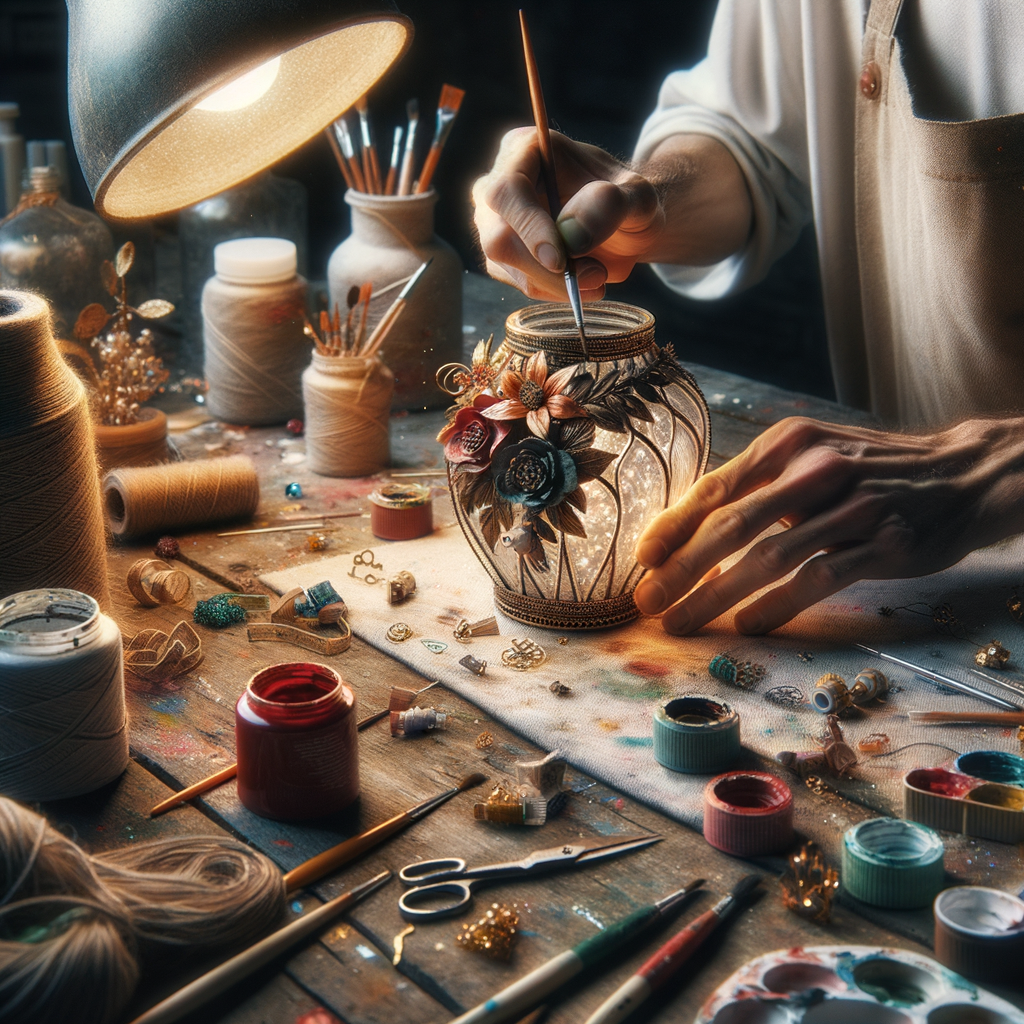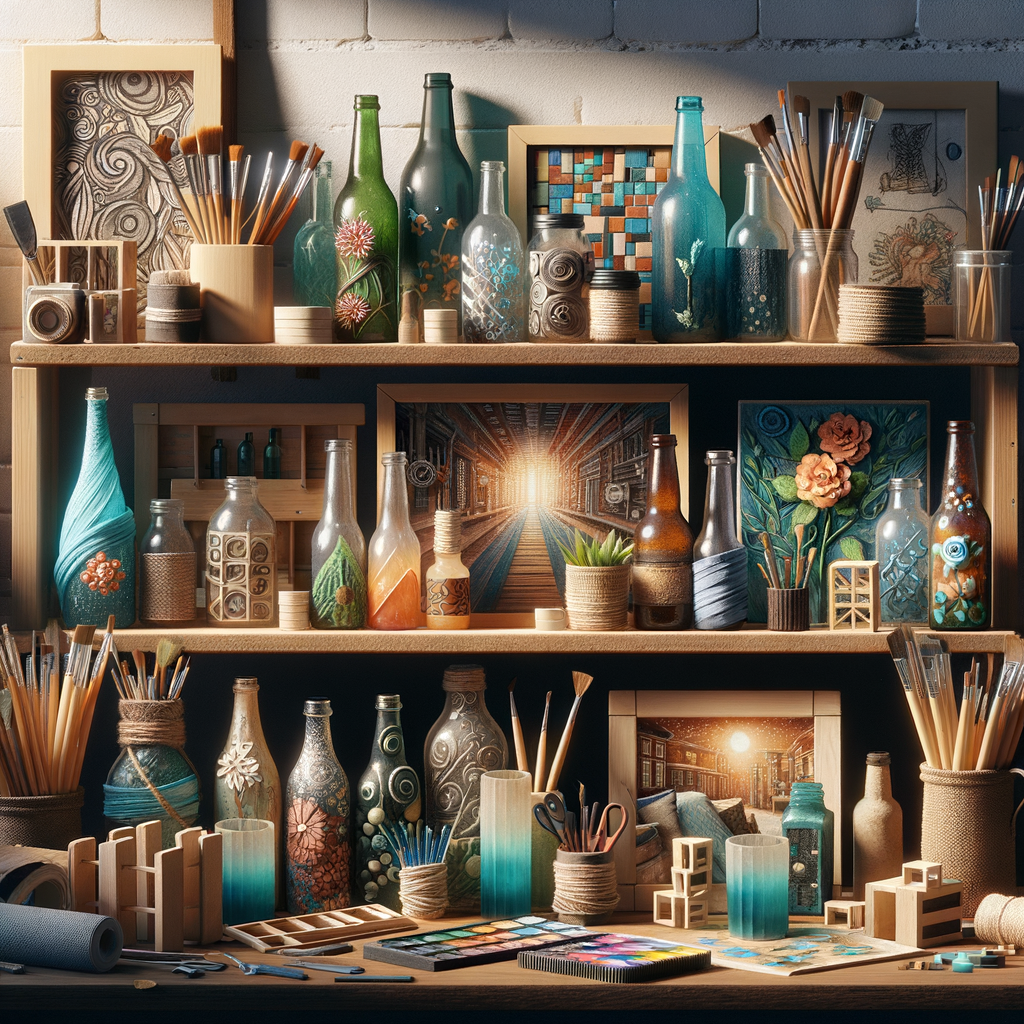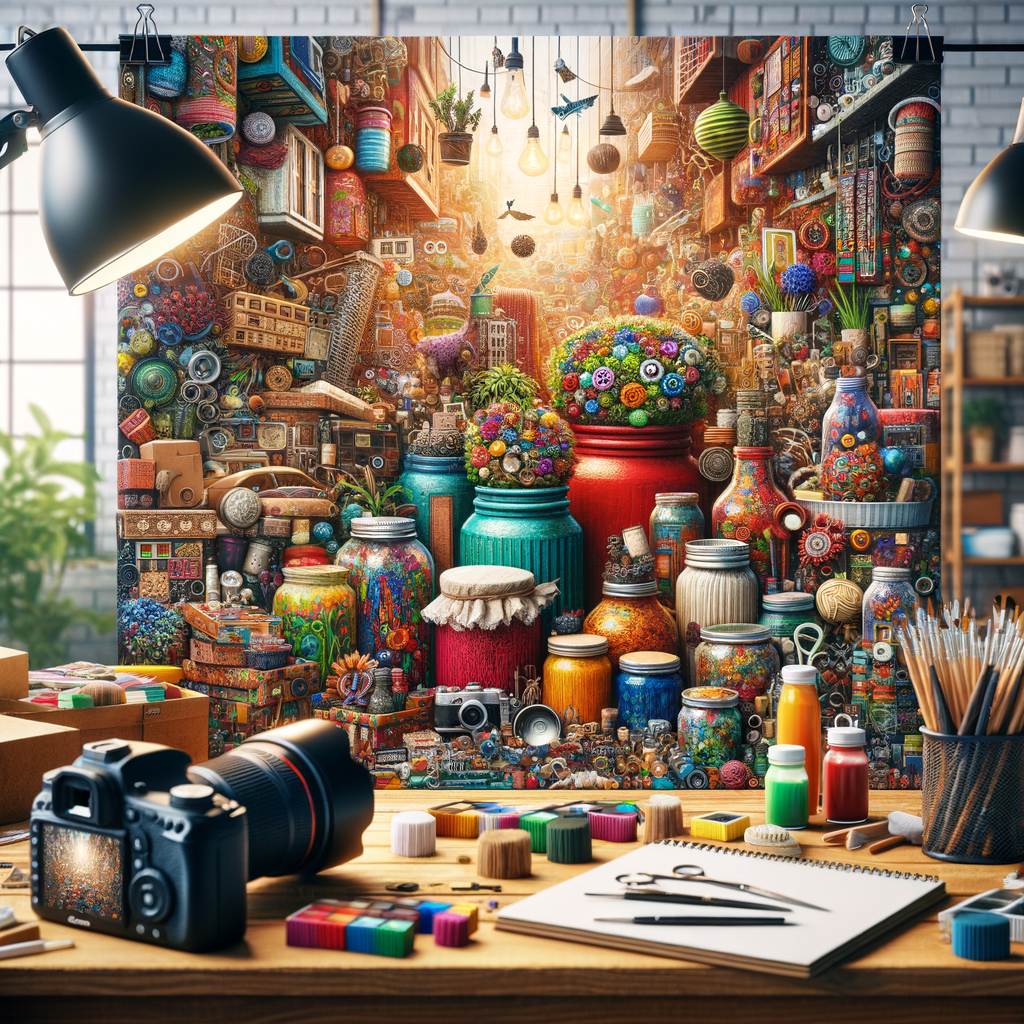Transforming Everyday Items into Masterpieces: Creative Upcycling Techniques
Unlock innovative ways to upcycle household items into beautiful art. Explore creative DIY techniques that blend sustainability with artistic flair.
Transforming Everyday Items into Masterpieces: Creative Upcycling Techniques for Arts & Crafts Enthusiasts
Upcycling breathes new life into items otherwise bound for the trash and is an exciting way for arts and crafts enthusiasts to express creativity while promoting sustainability. As more people seek eco-friendly art projects, transforming everyday objects into unique masterpieces has become central to the modern DIY movement. With a little inspiration and a handful of common household goods, you can create stunning artwork, useful home décor, or even giftable treasures, all while reducing waste and saving money.
Why Upcycling Matters in the Arts and Crafts World
Upcycling isn’t just about recycling—it's about reimagining. When you look at a glass jar or an old T-shirt, consider its artistic potential instead of its throwaway value. This mindset shift reduces environmental impact and encourages resourcefulness. Artists and crafters embracing upcycling often find their work stands out in a saturated market by highlighting ingenuity and social responsibility. Plus, the unique characteristics of repurposed materials can add exceptional texture or interest to your final creations.
Getting Started: Collecting and Preparing Materials
Creativity starts with observation. Take stock of potential materials around your home: glass bottles, tin cans, cardboard boxes, fabric scraps, or old magazines. Clean and dry these items to remove labels or residues, providing a blank canvas for your ideas. Use safe practices when handling sharp edges or potentially hazardous materials—upcycling should be as safe as it is inspiring. Many creators find joy in the treasure hunt aspect, sourcing supplies from thrift stores, neighbors, or local recycling centers.
Sustainable crafting also involves planning. Think about the end use of each piece; an old ladder could become a rustic bookshelf, while single socks gain new life as playful puppets. Simple techniques like painting, decoupage, or embellishment can turn the ordinary into the extraordinary, presenting endless possibilities for artists of every skill level.

Techniques to Elevate Your Upcycled Art
For beginners and seasoned crafters alike, a few key techniques can transform discarded items into standout pieces. Decoupage, for instance, allows for colorful personalization of surfaces like jars, trays, or boxes using scrap papers or fabric. Painting—whether abstract designs or stenciled motifs—turns containers and furniture into statement art. For textile lovers, patchworking combines fabric remnants in creative ways, producing vibrant quilts, pillow covers, or tote bags. Assembly techniques like gluing, sewing, or wire-wrapping hold mixed materials together, letting your imagination drive unconventional combinations.
Take advantage of trends like “shabby chic” by distressing wood furniture with sandpaper and chalk paint, or embrace industrial aesthetics with metallic finishes and geometric patterns on metal cans. Adding functional hardware—hooks, handles, hinges—can transform art pieces into usable storage solutions, planters, or wall organizers. The key is experimentation: don’t be afraid to mix colors, layer textures, or incorporate natural elements like dried flowers, twigs, or pebbles.

Community, Sharing, and Selling Upcycled Creations
Social media platforms and niche online marketplaces have made it easier than ever to share and sell your upcycled masterpieces. Platforms such as Instagram, Pinterest, and Etsy are teeming with upcycle enthusiasts eager to showcase their works, offer tutorials, and connect over sustainable values. Joining relevant Facebook groups or local crafting clubs can also provide feedback, inspire fresh ideas, and even help you build customer relationships if you decide to turn your passion into a side hustle. Remember to photograph your projects in natural light and share before-and-after shots to highlight the transformation—and don't hesitate to narrate the creative journey behind your work, as storytelling adds depth and personality to your brand.
Avoiding Pitfalls: Quality, Safety, and Originality
While upcycling emphasizes reusing and reinventing, it’s important to prioritize quality and safety. Use non-toxic paints, adhesives, and finishes, especially if your creations will serve as toys, kitchenware, or gifts. Reinforce structural integrity when crafting functional items—a hand-painted stool should be sturdy, not just decorative. Origin matters too: ensure your designs are original and avoid replicating copyrighted materials found elsewhere without permission. Giving credit to inspiring artists, when appropriate, fosters community and camaraderie in the upcycling world. Finally, ensure pricing for your upcycled art reflects both the effort involved and its unique, eco-friendly appeal.
Conclusion
Upcycling everyday items into true masterpieces is a fulfilling way to combine sustainability, artistry, and personal style. By experimenting with new materials and techniques, you not only help reduce waste but also inspire others to see the extraordinary potential in the ordinary. Explore your surroundings with a creative eye, nurture your skills, and transform even the simplest objects into conversation-worthy creations that brighten your home or provide a meaningful income stream.
Blog Article Tags
upcycling diy crafts recycling projects creative reuse eco-friendly art arts and crafts sustainable crafting home decor projects repurposing ideasMore Articles
Why Indie Artists Should Start Building Their Fan Base Now - Learn several hidden secrets to marketing and promoting your music to grow your fanbase
The Ultimate Guide to Creating a Consistent Personal Brand Across All Your Social Media Platforms - Master the art of building a cohesive personal brand on every social channel. Boost engagement, trust, and recognition with these actionable branding tips.
Harnessing AI-Generated Art to Launch a Unique Digital Art Business in 2025 - Discover how to leverage AI-generated art to build and scale a distinctive digital art business for artists, entrepreneurs, and tech enthusiasts in 2025.
Leveraging AI-Generated Content to Boost Your Small Business's Online Presence in 2025 - Learn how small businesses can harness AI-generated content in 2025 to engage audiences, increase visibility, and outperform competitors online.
Mastering Personal Brand Storytelling for 2025: Craft Narratives That Connect - Discover how to master personal brand storytelling in 2025 by creating authentic narratives that resonate with audiences and drive real engagement.


